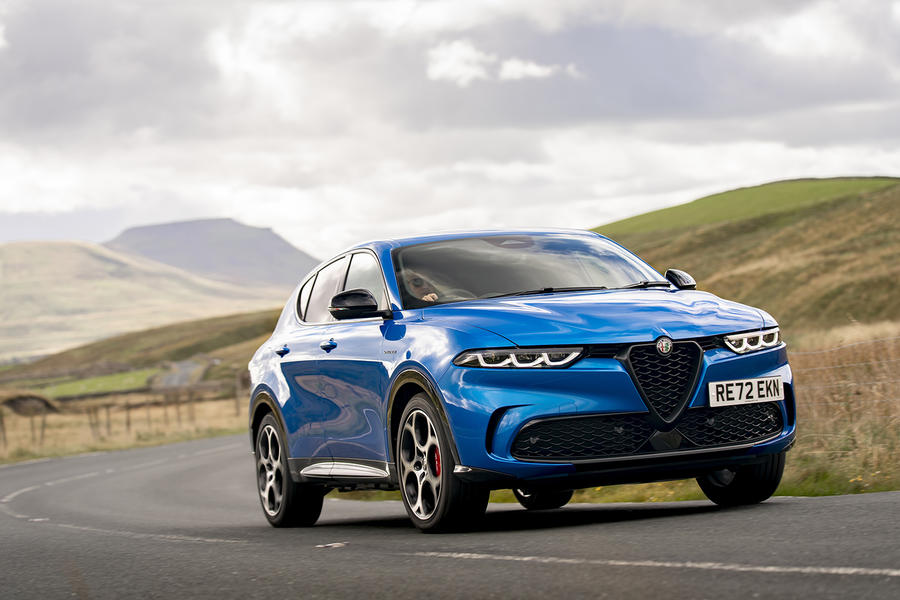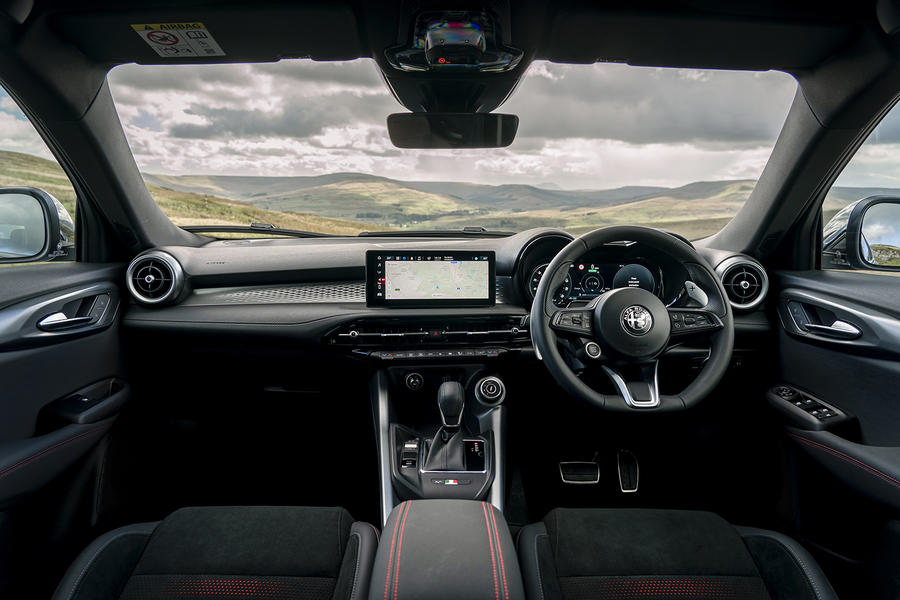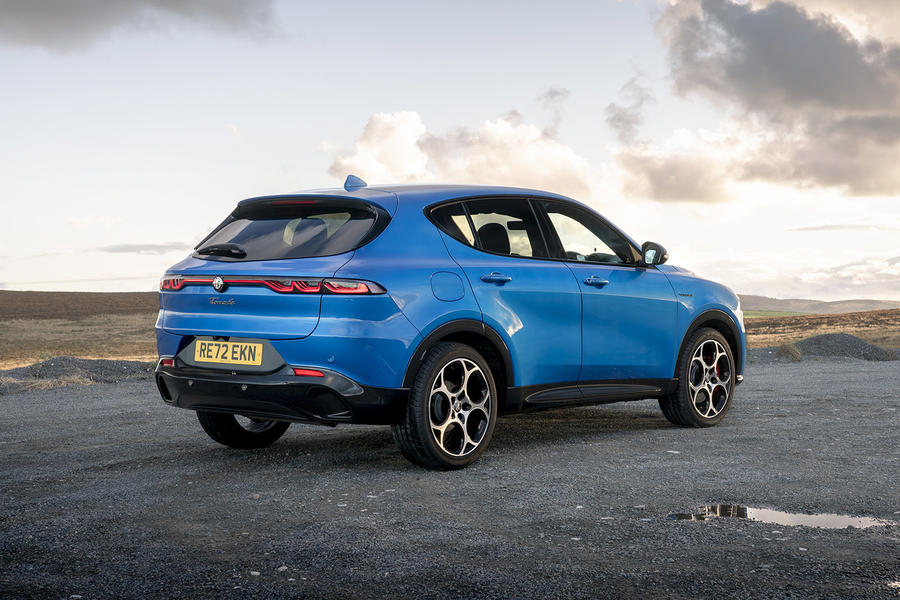We’ve already sampled the Tonale in another hybrid guise. Is this version superior?
‘Zero to zero’ is the slightly self-deprecating slogan Alfa Romeo is using to reflect the fact that it’s going from offering zero electrified cars in 2022 to selling only zero-emission EVs by 2027. This Alfa Romeo Tonale Plug-in Hybrid is the first step on that road.
The Tonale Plug-in Hybrid’s powertrain consists of a 177bhp turbocharged four-cylinder 1.3-litre petrol engine driving the front wheels through a six-speed automatic gearbox, and a 121bhp electric motor driving the rears.
This motor draws power from a 15.5kWh battery, which allows for an impressive 43-mile EV range. That all gives combined economy and CO2 figures of 257mpg and 26g/km, in turn opening up the fleet market in which Alfa Romeo hasn’t been able to play for a long time.

Much of what we’ve experienced in other Tonales is the same here. Hybrid-specific features include the ability to save the battery for a zero-emission zone, and a downhill coast function that holds 31mph and recharges the battery in the process (and that works particularly well). The rear suspension has been tuned to take the extra weight of the hybrid system, which contributes to a hefty total kerb weight of 1835kg.
Even so, Alfa talks up the Tonale Plug-in Hybrid as the sportiest model in its class. It certainly has a keen front end, and quick steering that can catch you out with its directness. I’m not sure you’d ever call it sporty, though, mainly because it feels so heavy.
It’s only 4.5 metres long, but that mass dominates the dynamics. Handling is a bit stodgy, and it’s hard to get a good flow through a series of bends, even with the DNA drive selector set to D (for Dynamic).
That weight influences the drivetrain, too: this never really feels like a 276bhp car. There’s no mechanical connection between the engine and hybrid system, and it shows. The software always needs some thinking time to respond to right-foot inputs. Throw in a strange dearth of low-end torque, and the whole powertrain underwhelms somewhat.
The low-speed ride is pretty crashy and brings lots of head toss inside, but it settles at higher speeds and is at its best on the motorway. Ironically, considering its positioning, these low-input, low-demand driving situations are where the Tonale Plug-in Hybrid does its best work.

It’s less underwhelming in more rational areas. The interior is spacious, the controls are nicely laid out and clear and easy to use, the infotainment works well, and there’s good visibility, a comfortable driving position and a relaxed temperament if you just want to potter around.
On that front, Alfa Romeo is also making a huge push on quality, and while that will mainly be borne out over a longer period, there’s an impressive solidity to the car and excellent fit and finish.
A funny kind of car, then, the Tonale Plug-in Hybrid. A BMW X1 xDrive25e has it licked on driving dynamics and hybrid drivetrain integration, while a Volvo XC40 Recharge plays the laid-back game better again than the Alfa. Alfa calls itself a premium brand, and these two rival premium players provide the stiffest of competition.

In this new era, Alfa has found plenty of new rational qualities but seemingly left behind those for which we loved it in the first place. If Alfa can strike a better balance between the two, it could yet become a serious player, although that’s not going to happen with this particular version of the Tonale
Source: Autocar